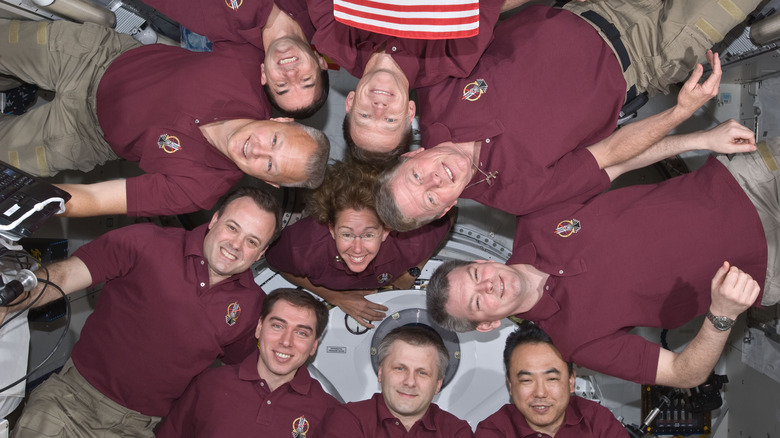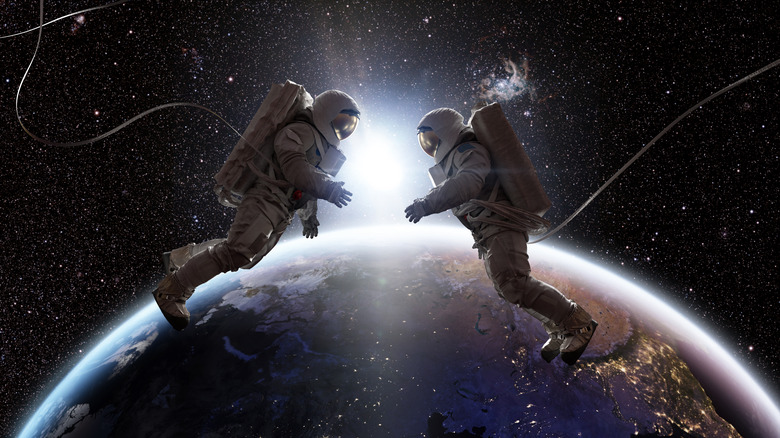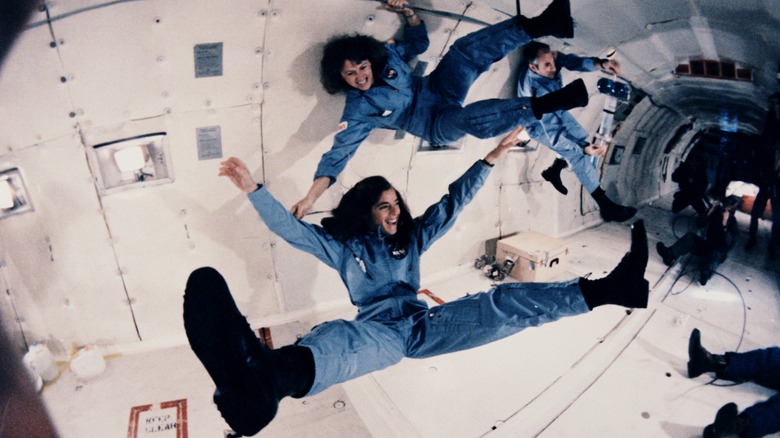Zero Gravity Explained: Where & When Does It Exist?
If there's one thing everybody knows about space, it's that there's no gravity once you leave the Earth's atmosphere. We all know that don't we? It's actually not true — and an attempt at a massive oversimplification of our admittedly limited experiences traveling in space. As of 2024, humans have ventured only around 250,000 miles from Earth — to the moon and back. While that sounds like a vast distance, in space, it's barely anything at all.
What we experience during spaceflight isn't zero gravity, as many believe — it's microgravity. The International Space Station (ISS) orbits at 230-285 miles above the planet, and astronauts aboard float about as if there's no gravity at all. If a quarter million miles is barely anything, then 285 miles is hardly worth mentioning. The truth is that Earth's gravity still affects astronauts on the ISS, at around 88% the strength as it would if they were standing on the ground. It does so differently due to how objects orbit the planet.
The reason astronauts float about aboard spacecraft is because of weightlessness, not zero gravity. This is created because they're constantly falling toward the planet without smashing into it. When an object like a spacecraft enters orbit around the Earth, it does so by hitting the correct orbital velocity to be caught in the planet's gravity. This horizontal travel around the planet causes a stable orbit in which the object never enters the atmosphere. For the ISS, the right speed is roughly 17,000 mph, resulting in a complete orbit every 90 minutes.
If not zero gravity, what is microgravity?
Gravity is a fundamental force of nature experienced by any object with mass. The greater the mass, the greater the gravitational pull, so gravity affects us in ways most people don't realize. The Earth's gravity holds us down on the ground but also keeps the Moon in a stable orbit around the planet. In turn, the Moon's gravity and orbital rotation pull Earth's waters along its path, resulting in the ocean's tides. On top of all this, everything in the solar system is held in place by the Sun's gravity, and so on.
Gravity diminishes over long distances, but not to the point that humans orbiting the planet would feel an appreciable difference so that they float in their spacesuits. If their orbit decays, they fully experience the Earth's gravity as they're pulled down to the planet. This is the simplest way to understand the effects of gravity, meaning there is no such thing as zero gravity in space — at least, not within the gravitational pull of a galaxy.
Microgravity, on the other hand, is something humans experience in space, but the name is a misnomer. Orbiting objects, including astronauts, experience a free fall as they orbit the planet. While this gives the experience and even the sensation of microgravity, in reality, it's a form of microacceleration, and it's not something only astronauts can experience. You, too, could experience the same effects without going into space, and no, we're not talking about a zero gravity chamber — we're talking about the Vomit Comet.
Feeling the effects of microgravity on Earth
If you're so inclined, you can book a trip on the reduced-gravity aircraft, commonly known as the Vomit Comet. This aircraft is typically reserved for astronaut training, but it's accessible to the public — the actors in "Apollo 13" filmed all of their so-called zero gravity scenes aboard it. Kevin Bacon was the unwitting participant in the aircraft's naming when a crewmember puked all over him.
The Vomit Comet is an aircraft that flies in a specific pattern to create the onboard sensation of microgravity or weightlessness. It does this by flying a parabolic path, going up to an altitude of about 32,500 feet at a 45-degree angle and back down to 24,000 feet at a 45-degree angle before repeating the pattern. When the aircraft hits the height and begins its descent, everyone onboard experiences a sensation that is essentially the same as microgravity felt aboard a spacecraft.
This results in about 25 seconds of weightlessness aboard the airplane. In a typical flight, the pilots execute up to 40 parabolic maneuvers over a three to four-hour trip. Around two-thirds of all passengers become ill from the experience. This works on Earth, where gravity is greater than in space because it emulates orbital freefalling in the brief window the aircraft hits its height and begins its descent. NASA and other space agencies routinely use reduced-gravity aircraft to train their astronauts.


